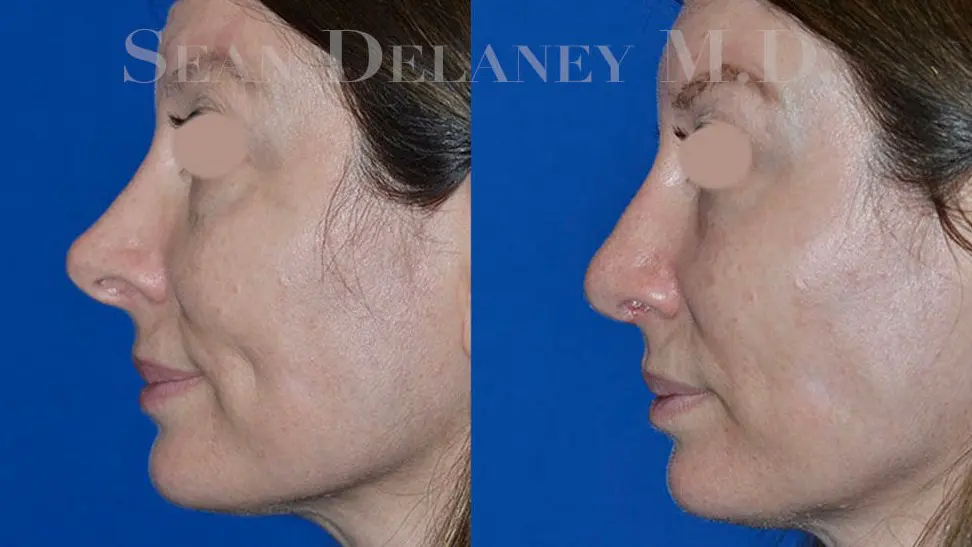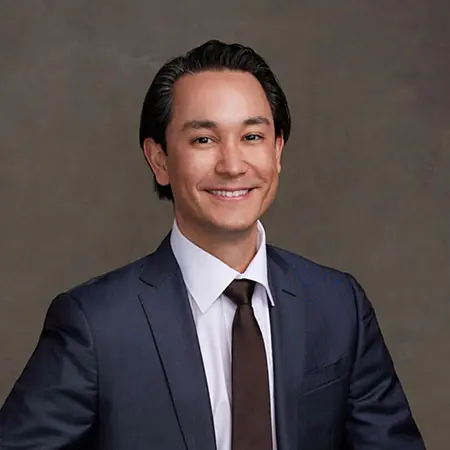August 22, 2022 | Revision Rhinoplasty
3 minute read
Revision rhinoplasty is a complex procedure to reshape or resize the nose after one more prior surgery. First-time rhinoplasty is already difficult, and each successive revision surgery becomes increasingly more challenging. In revision rhinoplasty, we must address the new problems that have prompted your consultation and work with previously altered nasal anatomy.
During rhinoplasty, the different tissue layers of the nose are separated, and scar tissue forms between these layers afterward. Because of the scar tissue, tissue planes that were easily separable before surgery become stuck, like paper glued together. The surgeon must meticulously dissect the scarred tissue planes in a revision procedure, which is technically challenging and time-consuming. Scar tissue can impede blood flow, thereby delaying healing and prolonging swelling. Additional scar accumulates after each surgery and keeps the nose swollen longer.
Furthermore, the nose is not like a piece of clay that can be molded into any shape the surgeon desires, nor can the surgeon ensure that the nose will retain its shape forever. Because the nose is made up of biological tissue, healing is not always the same in all patients, nor is it predictable. Over time, cartilage can warp or buckle, and bone can heal with irregularity.
The complexity of revision rhinoplasty depends on the nature of the problem that needs to be corrected. In cases where not enough was performed at the initial surgery, such as a residual bump or irregularity, revision surgery may be more straightforward because it is easier to take away than add. On the other hand, if the problem is that too much tissue was removed at the initial surgery, such that the nose has been made too short, overly up-turned, or pinched, revision surgery will be more difficult. In such instances, tissue grafts will be necessary to rebuild the nose. With precision and care, we can create grafts molded to simulate the shape and function of the previously removed structures. However, it is almost impossible for even the most expertly crafted grafts to look or function better than the original naturally shaped tissues that these grafts are intended to replace. The types of grafts needed depend on the location and type of tissue deficiency, including skin, cartilage, bone, and internal lining. Occasionally the defects are so extensive that multiple grafts from several sources are needed. While I prefer to use my patient’s own tissue first for grafts, sometimes donor grafts may be required for the reconstruction.
Another inherent challenge with revision rhinoplasty is that there is a certain degree of discovery in each case, and so much of what we can do as surgeons depend on what we find at the time of the surgery. Although previous operative reports, radiographic imaging, and comprehensive physical exams in the office could be helpful, they cannot tell us exactly how the nasal structures will appear during surgery.
Also important to consider is that the nose serves many functions, including breathing, warming and humidifying the air we breathe in, and our sense of smell. Therefore, we need to plan to preserve or improve these fundamental functions when considering revision surgery.
Revision rhinoplasty will generally take longer to perform in the operating room than a first-time rhinoplasty because of its increased complexity. and the need to harvest tissue grafts.
Despite the inherent challenges of revision rhinoplasty, we find that most patients benefit from revision surgery, especially those who are realistic in their expectations. Given the complexity of revision rhinoplasty, it is paramount that you consult with a board-certified facial plastic surgeon for a consultation.






